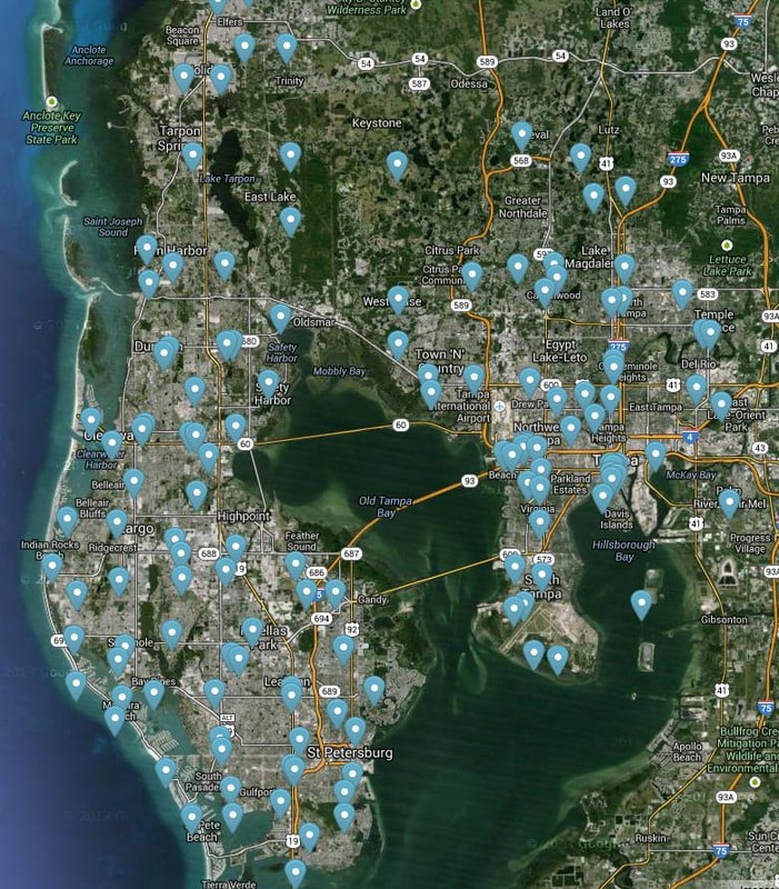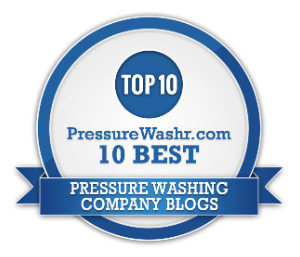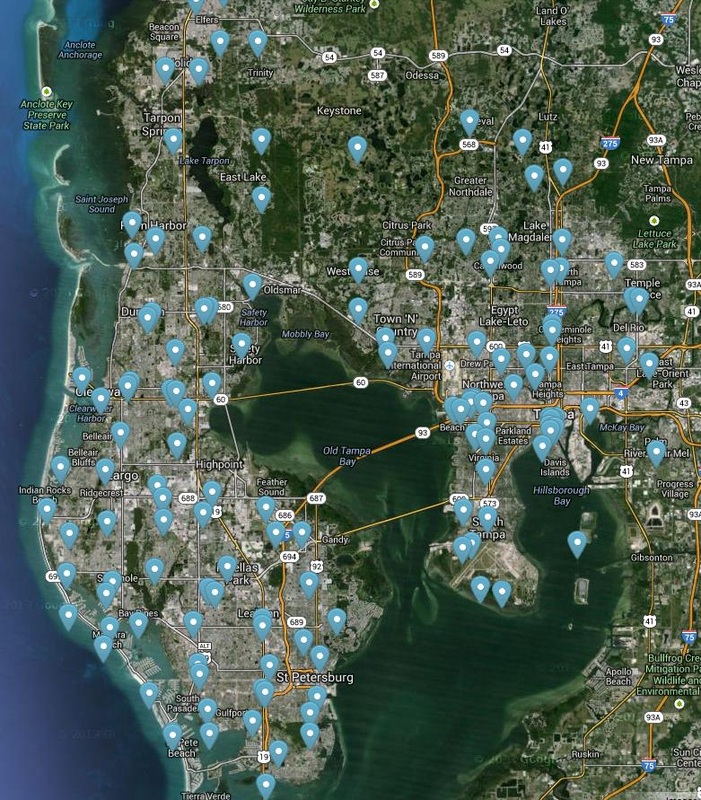|
If you're planning to undertake a large painting project, proper preparation is key to a successful job. That preparation often involves stripping old paint from the surface that needs new coats. Removing old paint, however, is a time-consuming and tedious proposition if you do it by hand. Fortunately, pressure washing is a viable alternative to doing the job manually. Appropriate for Many Different Surfaces Using power washing on home exteriors is an excellent method to remove paint. The high-pressure stream works on surfaces such as wood, stucco, many types of masonry, concrete, decks and even fences. Keep in mind that you'll need to pay attention to several factors, including safety, when choosing to power wash for paint removal from exterior surfaces of your home or business in the Clearwater area. DPI Pressure Washing recommends that if you do the job yourself that you wear protective clothing and goggles when using a pressure washer. The force from a power washer can easily blow paint chips into your eyes or your skin. This step is doubly important when using paint stripper chemicals prior to removing old paint with the pressure washer as some of these substances can cause skin irritation. Choose the Right Pressure Washer Removing exterior paint requires a stronger stream of pressure than soft washing jobs such as cleaning a roof. Thus, you want to find a pressure washer that is up to the task. To properly strip old paint, you will need a pressure washer with a psi of 2000 or higher. Even setting the unit at 2000 won't do the trick. You'll need a pressure washer that has the ability to spray closer to 3,000 psi for effectiveness. Also important is choosing the right spray nozzle for the jobs. Most rental machines come with a variety of different nozzles ranging from 0 degrees to 65 degrees. You will almost never use a 0-degree nozzle as the spray field is so narrow that it forces water out at a high intensity. To remove paint, use a 15-degree nozzle as it sprays water in a wider arc that is intense enough to remove paint yet won't damage the surface on which you are working. if you are still unsure, work with one of the wider tips and work your way down until you begin to chip away at the old paint. You may also be able to use a turbo nozzle when pressure washing to remove exterior paint. The turbo nozzle combines the force of a 0-degree nozzle with the spray area of a 25-degree area along with a rotating head that pulses water at speeds between 1800 rpm to 3000 rpm. Preparing the Area All surfaces, whether wood, stucco or anything else, will benefit from a light sweeping or dusting to remove loose dirt. Check for damaged areas and repair these before continuing so as not to increase the damage through pressure washing. Remove all furniture that is not part of the cleaning job as well as any obstructions. Place protective coverings over nearby bushes and landscaping. You may also remove exterior paint that is visibly loose with a scraper or a wire bristle brush. Taking the time to lightly scrape will reduce the amount of pressure needed. In addition, if you are pressure washing an area near windows and doors, such as a porch, you will need to cover and seal those areas so water doesn't infiltrate into your home. Some surfaces, such as decks, may benefit from a light application of paint stripper prior to a power wash to soften the remaining paint. Apply paint stripper to all areas covered with paint and let the application work until the old paint begins to bubble and lift. Always check to see what type of paint stripper you should use on the surface you are preparing. When bubbling begins to occur, begin power washing. Using the Pressure Washer When you're ready to begin, set the power washer to the lowest possible setting that you believe will work and apply the stream to a discreet test area to ensure that the pressure you have selected will not damage the surface. Adjust your pressure and the nozzle used, if needed. Start the job by holding the pressure washing wand about 18 to 20 inches away from the surface with the old paint. Move closer if you feel that the spray isn't working as efficiently as you want. At the same time, make sure that you are holding the wand at the angle recommended for the type of surface you're power washing. Work in wide, three-foot swaths and if stripping exterior paint from wood, make sure to work with the grain, not against it. Once you have completed pressure washing, you may still have to scrape loose bits to complete the paint removal process. Note that not all of the paint needs to be removed, but you must remove enough of it to ensure that enough has been removed so that the new paint will adhere to the cleaned surface. Wait at least 48 hours to let the surface completely dry before applying a new coat of paint. Let Someone Else Do the Paint Removal If the process sounds too complicated or time consuming, you have probably performed a search for pressure washing near me in Clearwater to find a reliable contractor to do the job. DPI Pressure Washing has crews experienced in removing exterior paint through power washing. When you contact us, we will provide you with a no-obligation quote. If you elect to have us do the job, you won't have to worry about possibly damaging your property, plus you'll have extra time to do the things you really want. Contact DPI Pressure Washing today at 813-991-7243 to get a personalized quote or schedule your power washing job today. Comments are closed.
|
Ella May + Luna Marie + Amelie Rose Munoz:We like to help our Dad to promote his pressure washing and window cleaning business in Clearwater and Tampa Bay. Hope you enjoy this blog ;-). Charlotta Munoz + kids
Categories
All
Archives
June 2024
|
Fully Licensed and Insured - Keep your mind at ease while we work for you.
100% Satisfaction Guaranteed - We never let a customer down!
Affordable and Prompt - We don't like to be late, or expensive.
100% Satisfaction Guaranteed - We never let a customer down!
Affordable and Prompt - We don't like to be late, or expensive.
Serving the Tampa Bay area since 1996!




 RSS Feed
RSS Feed






